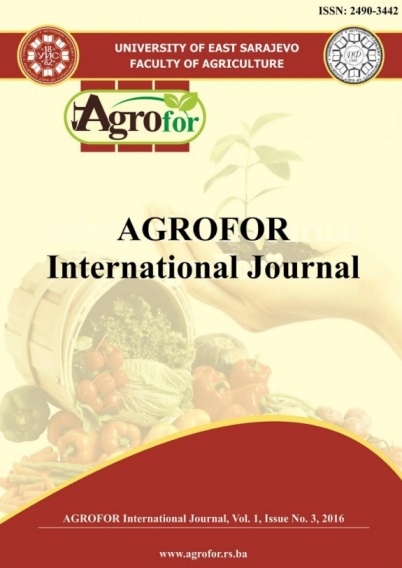GENOMIC DETERMINATION OF THE MOST IMPORTANT FATHER LINES OF SLOVAK PINZGAU COWS
DOI:
https://doi.org/10.7251/AGRENG1603110KAbstract
The aim of this study was to assess genetic structure of Slovak Pinzgau population
based on polymorphism at molecular markers using statistical methods. Female
offspring of 12 most frequently used bulls in Slovak Pinzgau breeding programme
were investigated. Pinzgau cattle were found to have a high level of diversity,
supported by the number of alleles observed across loci (average 5.31, range 2-11)
and by the high within-breed expected heterozygosity (average 0.66, range 0.64-
0.73). The state of genetic diversity is satisfying and standard for local populations.
Detection of 12 possible subpopulation structures provided us with detailed
information of the genetic structure. The Bayesian approach was applied, detecting
three, as the most probable number of clusters. The similarity of each
subpopulation using microsatellites was confirmed also by high-throughput
molecular data. The observed inbreeding (FROH=2.3%) was higher than that
expected based on pedigree data (FPED=0.4%) due to the limited number of
available generations in pedigree data. One of the most important steps in
development of efficient autochthonous breed protection programs is
characterization of genetic variability and assessment of the population structure.
The chosen set of microsatellites confirmed the suitability in determination of the
subpopulations of Pinzgau cattle in Slovakia. The state of genetic diversity at more
detailed level was successfully performed using bovineSNP50 BeadChip.

